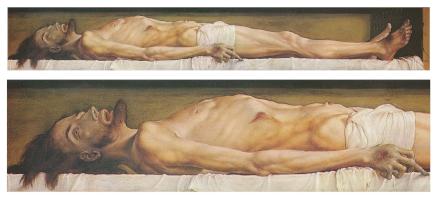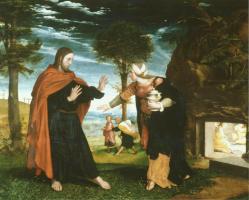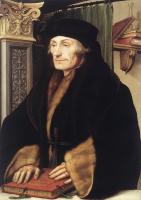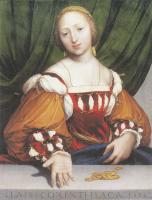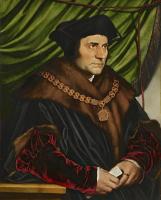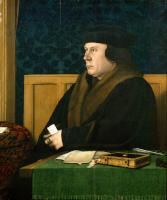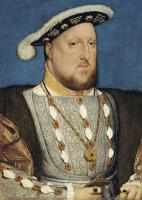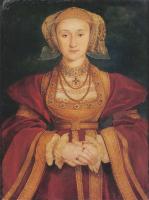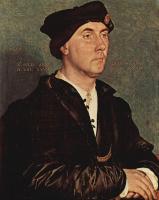Hans Holbein the Younger
Hans Holbein was born in the rich commercial city of Augsburg, where his father Hans the Elder was a well-known painter. He trained in his father’s workshop and then moved to Basel, where he started on his own successful career.
Eventually he was to seek his fortune in London, and to this circumstance we
owe the greatest paintings of the Tudors and their circle: Henry vm and his
wives; Edward VI as a child; Sir Thomas More before his fall from favour; and
Thomas Cromwell. He became Henry VIII’s court painter, with a studio in the Old
Palace of Whitehall. It was during his stay in London, and probably shortly
before he entered the king’s service, that he painted this magnificent
portrait.
_
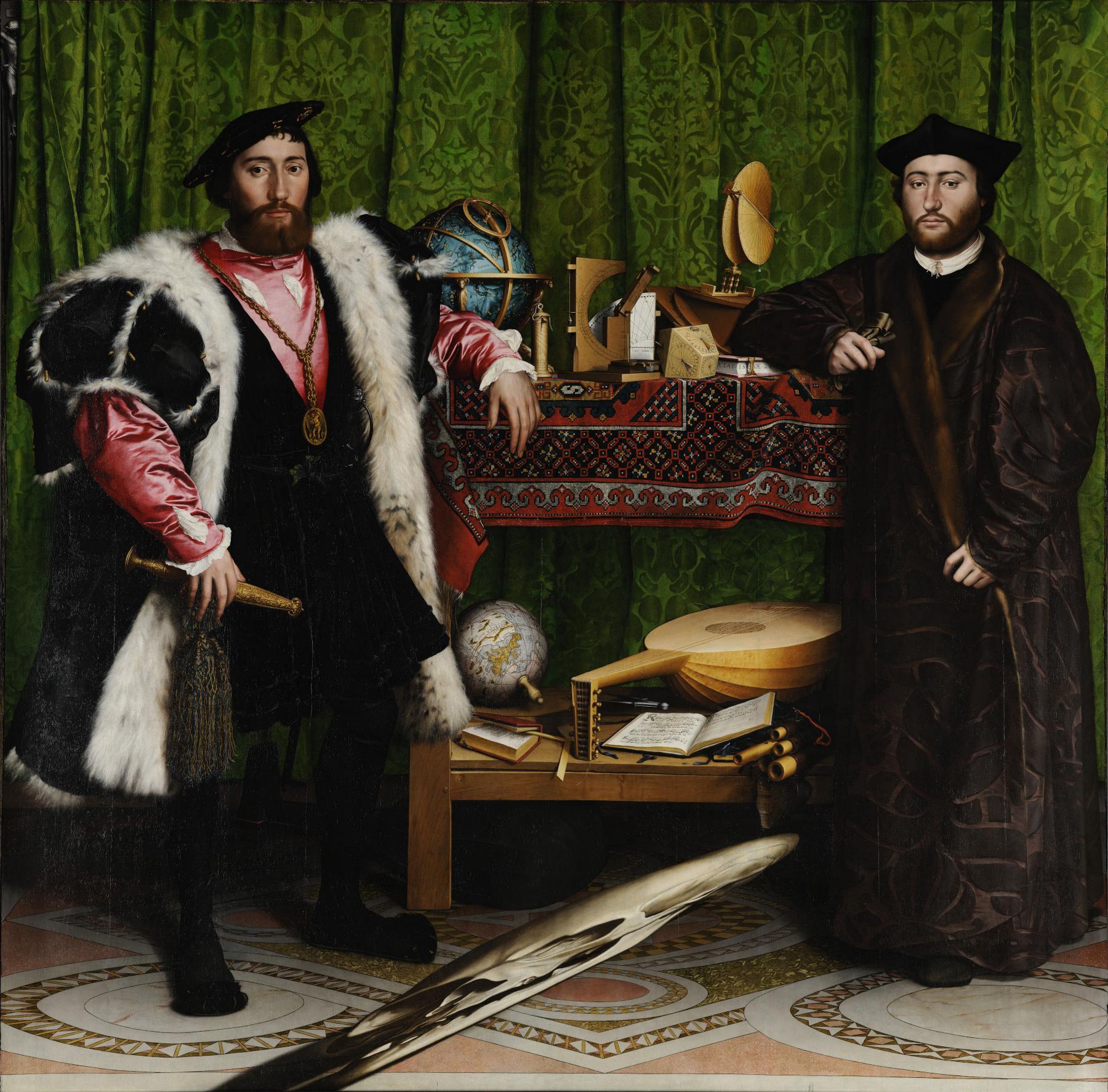 The Ambassadors is one of the first full-length, life-size portraits in the
North, and it shows two richly dressed, dignified young men, conscious of their
office, their responsibilities and their positions in life. The robes they
wear are fur-trimmed and made of shining, elaborately decorated materials. Both
young men are surrounded by objects — terrestrial and celestial globes,
mathematical instruments, books both religious and worldly, a lute, a piece of
Turkish carpet —l all of which indicate their high education, their
knowledge and understanding of the world about them and their interest in
science, art and religion.
The Ambassadors is one of the first full-length, life-size portraits in the
North, and it shows two richly dressed, dignified young men, conscious of their
office, their responsibilities and their positions in life. The robes they
wear are fur-trimmed and made of shining, elaborately decorated materials. Both
young men are surrounded by objects — terrestrial and celestial globes,
mathematical instruments, books both religious and worldly, a lute, a piece of
Turkish carpet —l all of which indicate their high education, their
knowledge and understanding of the world about them and their interest in
science, art and religion.
The man on the left is an aristocrat Jean de Dinteville, aged twenty-nine, the French Ambassador in London; his friend and visitor is Georges de Selve, the twenty-five-year-old Bishop of Lavaur, who also undertook diplomatic duties. These men are in the prime of life, but Holbein is anxious to show that death is never far away, and he has included several symbols of death as a reminder of this. In the top left hand corner a crucifix is just visible, the tiny skeletal figure of Christ almost covered by the rich green damask of the curtain; Jean de Dinteville wears on his tip-tilted hat a badge decorated with a skull; and at the very front of the painting there is a strange object, which can only be deciphered if the spectator moves to the right and views it from the side. It is a human skull, possibly painted in this distorted way because the painting was to hang on a staircase, and would be seen from the side.
Two mathematical instruments on the top shelf of the table show the exact time when the portrait was supposed to have been completed : 10.30 on the morning of 11 April. Time is frozen ; and this illusion paradoxically underlines the knowledge of time rushing on and age approaching. A string on the lute is broken, another symbol of how things end.
With great penetration Holbein has painted something of the lives of these two young men as well as revealing their accomplishments. Several of his great group portraits have sadly been lost; but The Ambassadors combines in the richest possible measure his insight into character, his range of intellectual interests, and his genius in portraying the world with perception and accuracy.
As was typical of a hard-working artist of his period, Holbein turned his hand to many things besides painting; he designed costumes, stained glass, objects in silver, and even themes for festivals. But his ability as a portrait painter brought him an international reputation, and he was certainly one of the greatest Northern Europe has ever produced.
 The Tudor period was one of intrigue and deception. In this portrait of Henry
VIII’s fourth wife, perhaps Holbein did smooth over with his meticulous,
blended brushstrokes those features that caused the king to call her the “Mare
of Flanders” once he had met her. Her elaborate dress certainly outshines her
facial expression. Should that have been a clue? However, by the time he and
Anne were wed, Henry was more or less ready to commission Holbein’s portrait of
his fifth wife.
The Tudor period was one of intrigue and deception. In this portrait of Henry
VIII’s fourth wife, perhaps Holbein did smooth over with his meticulous,
blended brushstrokes those features that caused the king to call her the “Mare
of Flanders” once he had met her. Her elaborate dress certainly outshines her
facial expression. Should that have been a clue? However, by the time he and
Anne were wed, Henry was more or less ready to commission Holbein’s portrait of
his fifth wife.
 When this portrait was first painted, Southwell had been sherriff of Suffolk
and Norfolk for two years, despite the fact that he was a convicted murderer.
Holbein conveys a certain unpleasantness about the man but, as always, in his
dispassionate style. The unshaven jaw below his sneering mouth draws the
viewers’ attention to the scars on his neck.
When this portrait was first painted, Southwell had been sherriff of Suffolk
and Norfolk for two years, despite the fact that he was a convicted murderer.
Holbein conveys a certain unpleasantness about the man but, as always, in his
dispassionate style. The unshaven jaw below his sneering mouth draws the
viewers’ attention to the scars on his neck.


